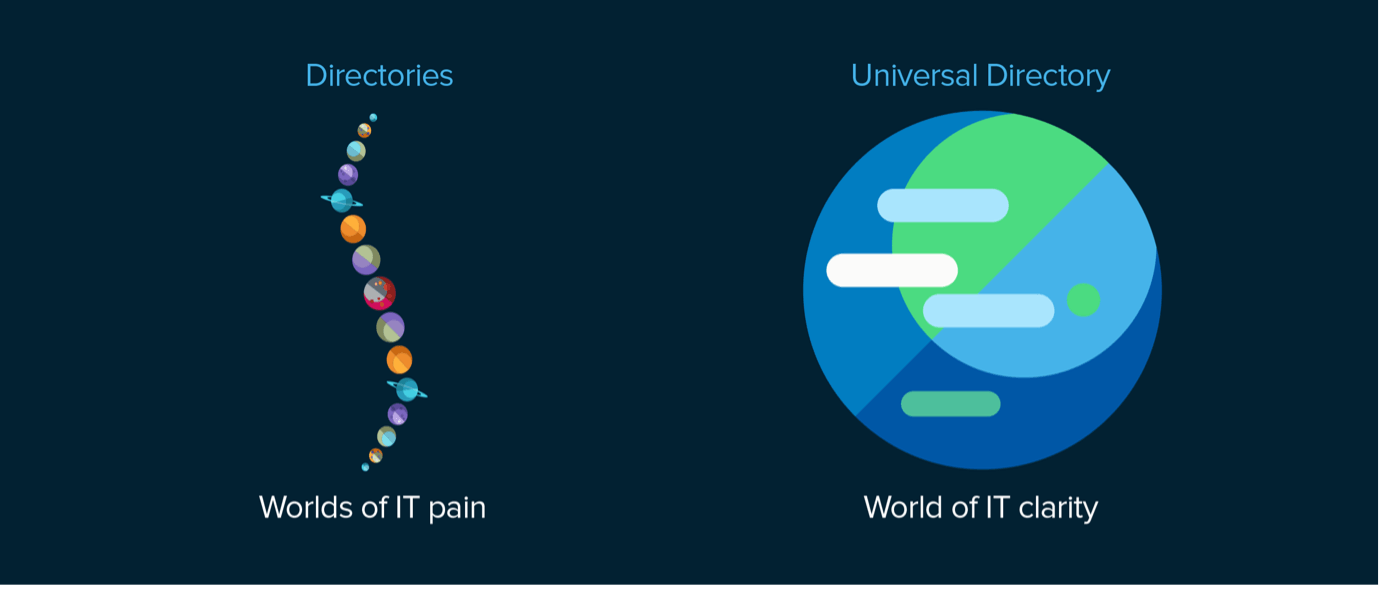The workforce focused pains multiplied by where identity lives

Anyone who has ever experienced back problems will know that the greatest pain often manifests itself far from where the source of the problem lies, in the spine. The same is true in business, where directories are the backbone of every organisation, but the pain they can ultimately cause manifests itself in every business area from revenue to reputation.
At the simplest level, modern businesses run on applications, mostly provisioned by IT. Apps can only be provisioned and accessed based on knowing your identity. Information that’s housed in directories. Let’s imagine they are like individual worlds, because that’s how they can appear. The greater the complexity of the directory structure, the greater the task to connect, integrate, access, provision, and secure the necessary apps for a business workforce.
Disjointed directories are the source of much business IT pain.
Every individual physical site, business unit, and brand within your organisation most likely has its own legacy directory, directory forest or domain, with an identity provider on top. Multiply that number then by each country you operate in. Imagine then that as an executive in that company you need to operate across all those countries, offices, business units and brands. Your identity will need to exist in all those individual directories.
To date, the time taken to carry out directory IT administration has just been considered the acceptable cost of doing business. Either IT would soak up the pain of this kind of work, or simply declare that it was too time intensive to undertake. Neither being a great advert for IT’s ability to create progress and efficiencies. Some businesses use scripts or even connectors to automate these types of actions and avoid some of the manual effort, but these integrations take weeks to months to build.
Often they have to be done on top of every single directory forest as these groups are stand alone. So, the next time you wonder why it seems to take IT so long to carry out what seems like a simple request – consider the multiplier effect of your organisation’s directories.
Acquiring more directories, acquires more pain.
One of the most common ways businesses grow is through mergers & acquisitions (M&As). We’ve already discussed the complexity of disjointed directories that potentially exist within one organisation. Now imagine you’ve acquired and are about to merge with another organisation and the plethora of directories they often already operate. Multiple IT worlds to merge together, or not. Because that’s the choice that businesses face. You either integrate the IT worlds and all those disjointed directories as part of a significant, costly project that you may not be equipped to staff, or more commonly, absorb the continual pain and run them as standalone IT systems with double the IT costs. Not a great choice really is it?
After M&A you want everyone to feel unified going forwards as one organisation. Your executives certainly need access across all those newly acquired directories. So much for those efficiencies you were hoping to achieve through M&A. It’s an IT nightmare and an important reason most M&As don’t deliver anywhere near their potential efficiencies.
To learn more about the role directories play and how they can be managed more efficiently with Okta’s Universal Directory, read our eBook “Universal Directory. Create one world’ here: https://www.okta.com/au/resources/whitepaper-universal-directory-create-one-world/